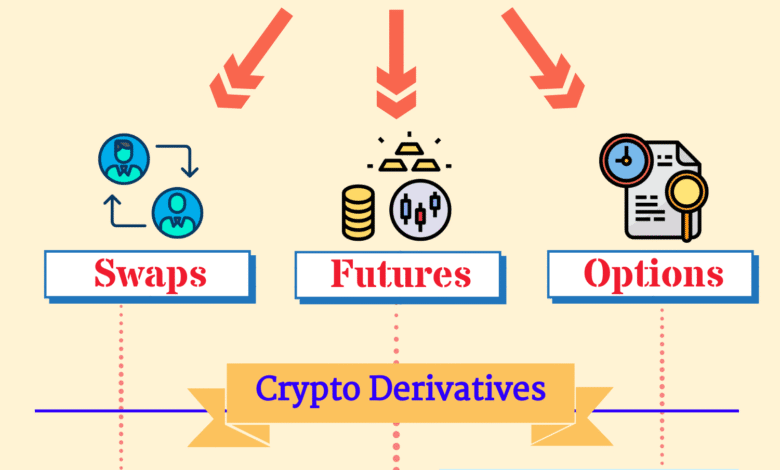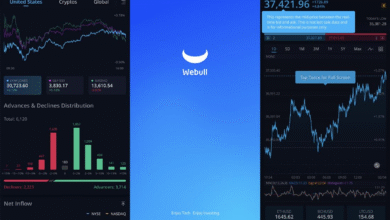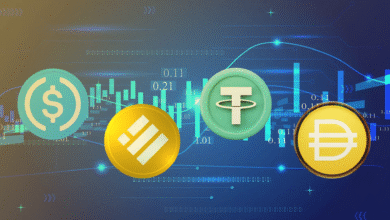Crypto Derivatives: Navigating the New Market Landscape

Crypto derivatives have become a cornerstone of the trading ecosystem in the digital asset world, transforming how traders approach market volatility and investment risk. With a surge in popularity among both retail and institutional investors, these financial instruments—including perpetual swaps and futures—offer innovative strategies that enhance capital efficiency. In recent times, crypto trading strategies have evolved rapidly, significantly outperforming traditional spot markets. In 2024 alone, the trading volume of perpetual swaps skyrocketed, demonstrating an essential shift in behaviors and a robust adoption among institutions looking to manage exposure effectively. As decentralized finance continues to shape the landscape, understanding the intricacies of crypto derivatives will be crucial for anyone aiming to thrive in this dynamic environment.
The realm of crypto futures and options trading is reshaping the way digital assets are utilized, representing a move towards more sophisticated financial techniques. Those engaged in the digital currency space are increasingly leveraging diverse trading methodologies to navigate market fluctuations seamlessly. With financial products like perpetual swaps gaining traction in both centralized and decentralized settings, traders are now equipped with tools that enhance both risk management and speculative potential. Moreover, as institutional players increasingly enter the market, the implications for crypto trading strategies become profound, underscoring the importance of staying informed about this rapidly evolving sector. Understanding these alternatives will not only bolster trading approaches but also illuminate the broader trends impacting the future of finance.
The Rise of Crypto Derivatives in 2024
In 2024, the crypto derivatives market has witnessed unprecedented growth, with trading volumes reaching heights that surpass those of traditional spot markets. As institutional investors increasingly recognize the potential of these financial instruments, perpetual swaps have emerged as a dominant force, showcasing a staggering trading volume of $58.5 trillion. This shift not only highlights the growing acceptance of crypto derivatives but also emphasizes their critical role in providing liquidity and facilitating risk management. With decentralized finance (DeFi) instruments echoing this trend, the overall landscape is transforming rapidly, making derivatives a crucial component of the crypto ecosystem.
The impressive rise of perpetual swaps is underscored by their increasing popularity among traders looking for innovative strategies to navigate the crypto markets. Q4 2024 saw a remarkable 79.6% increase in perpetual swap trading volume compared to the previous quarter, indicating that both retail and institutional players are keen to leverage these tools amid heightened market volatility. This trend signifies a maturation of trading practices, where experienced investors are honing their skills in derivatives to enhance portfolio performance and manage risk more effectively.
Understanding Perpetual Swaps
Perpetual swaps are a vital derivative that allows traders to speculate on the price of cryptocurrencies without the constraints of conventional expiration dates. Their unique structure enables traders to enter positions with considerable leverage and carry them indefinitely, provided they manage the associated funding rates. This flexibility has made perpetual swaps a popular choice for traders who wish to capitalize on short-term price movements, particularly in a market as volatile as crypto. As of now, perpetual swaps not only dominate trading volumes but also act as the perfect vehicle for implementing complex trading strategies.
Furthermore, the mechanics behind perpetual swaps involve a detailed understanding of the funding rate, which ensures that the contract price closely aligns with the underlying asset price. This relationship is crucial for ensuring that traders maintain equilibrium between long and short positions. As traders become more educated about the nuances of crypto derivatives, we can expect the rise of tailored trading strategies that utilize perpetual swaps, catering to both bullish and bearish market sentiments.
Institutional Investors and Crypto Futures
Institutional investors are increasingly entering the crypto derivatives market, driven by the need for effective volatility management and strategic asset allocation. With over 80% of trading activity in centralized exchanges attributed to institutional players, there’s a discernible shift in how these professionals approach the digital asset space. Crypto futures and options have become preferred instruments for managing exposure, as they offer the ability to hedge existing investments while speculating on price movements without acquiring the underlying assets.
The increasing participation of institutional investors not only solidifies the legitimacy of the crypto market but also enhances overall market maturity. Institutions utilizing well-established trading strategies such as arbitrage and market-making are helping to stabilize the market while also creating more sophisticated products for retail investors. This convergence between classic trading principles and novel financial products presents an opportunity for all market participants to navigate the complexities of crypto trading with greater confidence and sophistication.
Comparing Centralized and Decentralized Exchanges
The dichotomy between centralized exchanges (CEX) and decentralized exchanges (DEX) continues to shape the crypto trading landscape, particularly in the realm of derivatives. CEXs like Binance have established themselves as leaders in providing deep liquidity and user-friendly interfaces, making them the preferred choice for institutional traders and retail investors alike. With a significant market share of 38%, CEXs facilitate large transactions and provide an ecosystem where market makers and participants can thrive under optimal conditions.
In contrast, decentralized exchanges are gaining traction, reflecting an overall trend towards autonomy and reduced reliance on traditional financial intermediaries. However, challenges such as fragmented liquidity and slower transaction speeds highlight the growing pains of DEXs. As more traders explore decentralized finance (DeFi), improvements and innovations in DEX technology are expected to level the playing field. The competition between these platforms will undoubtedly drive advancements, benefiting all users regardless of their trading preferences.
Advanced Trading Strategies in Crypto Markets
As the crypto derivatives market evolves, traders are adopting increasingly sophisticated strategies to enhance profitability and minimize risk. Techniques such as delta-neutral trading and volatility arbitrage are becoming mainstays, allowing traders to harness various market conditions effectively. Delta-neutral strategies aim to balance long and short positions to weather market fluctuations, while volatility arbitrage seeks to capitalize on differences in volatility among various markets and instruments. Such strategies are critical in a volatile environment like crypto, where price swings can be dramatic and rapid.
Incorporating these advanced trading strategies requires a solid understanding of market fundamentals and a keen sense of timing. As educational resources and tools become more prevalent, a growing number of traders are learning to deploy these techniques, thus increasing market participation. This shift is not just beneficial for the individual trader but also contributes to market depth and stability, as sophisticated strategies often lead to increased liquidity and lower volatility across the board.
The Future of Trading in Cryptocurrencies
Looking ahead, the future of trading in cryptocurrencies is set to be influenced by the continued integration of traditional finance principles alongside innovative constructs in the crypto derivatives market. The regulatory landscape will play a pivotal role in shaping how these markets evolve, especially as authorities grapple with the growth of decentralized finance. Compliance with regulations is crucial for attracting institutional investors and ensuring long-term sustainability in the crypto market.
Moreover, as technological advancements continue to reshape the landscape, traders can expect the emergence of new derivatives products that are better suited to meet their needs. Whether through enhanced analytics, simplified trading interfaces, or new asset classes, the focus will remain on providing tools that empower all levels of traders. The collaboration between traditional finance experts and crypto innovators will usher in a new era of trading, characterized by greater accessibility, transparency, and efficiency.
Decentralized Finance and Its Impact on Derivatives
Decentralized finance (DeFi) is revolutionizing the way traders interact with crypto derivatives by providing seamless access to liquidity and innovative financial instruments. DeFi platforms are designed to operate without intermediaries, thereby lowering barriers for participation and empowering users with control over their assets. This shift is significant in an era where traditional financial systems are being scrutinized for their lack of transparency and inclusivity, making DeFi an attractive alternative for crypto enthusiasts.
The proliferation of decentralized derivatives, especially those utilizing automated market makers (AMMs) and lending protocols, highlights the potential of blockchain technology in reshaping financial markets. Traders can now hedge against risks associated with price fluctuations or earn yield on their assets without engaging with centralized entities. However, as the DeFi space matures, understanding the risks associated with smart contracts and liquidity provision will be essential for users looking to navigate these new opportunities successfully.
Risks and Challenges in Crypto Derivatives Trading
Despite the myriad opportunities present in the crypto derivatives space, several risks and challenges warrant consideration. The inherent volatility of cryptocurrencies poses a significant risk for traders who may face sudden and unpredictable price movements. Furthermore, lack of regulatory clarity in various jurisdictions can create uncertainty, making it crucial for traders to stay abreast of changing legal frameworks that might affect their operations.
Moreover, while derivatives can provide powerful tools for mitigating risk, they can also amplify losses when not managed carefully. Traders must possess a comprehensive understanding of not only the instruments they trade but also market dynamics and risk management strategies. Employing practices like setting stop-loss orders and maintaining a diversified portfolio can help mitigate potential downsides, allowing traders to navigate the complexities of crypto derivatives trading more effectively.
Conclusion: Embracing the Future of Crypto Derivatives
As we move forward, the integration of traditional financial strategies with the innovative landscape of crypto derivatives presents both challenges and opportunities. The ongoing participation of institutional investors indicates a burgeoning acceptance of crypto as a legitimate asset class. Moreover, as both retail and professional traders enhance their understanding of complex instruments like futures, options, and perpetual swaps, the overall market is likely to become more sophisticated and resilient.
Ultimately, adapting to the continuous evolution of the crypto landscape will be crucial for market participants. Staying informed about regulatory developments, emerging technologies, and evolving trading strategies will empower traders to harness the potential of crypto derivatives effectively. As we embrace this dynamic future, the focus will remain on finding balance and navigating the shifts that will define the next chapter of trading in digital assets.
Frequently Asked Questions
What are crypto derivatives and how do they impact crypto trading strategies?
Crypto derivatives are financial contracts whose value is derived from underlying cryptocurrencies, and they play a critical role in executing various crypto trading strategies. They include instruments like futures and options, enabling traders to hedge risks or speculate on price movements without owning the actual assets. This allows for greater flexibility and potential for profit in the volatile crypto market.
How do perpetual swaps work in the context of crypto derivatives?
Perpetual swaps are a type of crypto derivative that does not have an expiration date, allowing traders to hold positions indefinitely. They are linked to spot market prices through a funding rate mechanism, which ensures that the perpetual swap price converges with the spot price over time. This makes them a popular choice for traders seeking to leverage price movements without the constraints of traditional futures.
What is the significance of decentralized finance (DeFi) in relation to crypto derivatives?
Decentralized finance (DeFi) introduces innovative platforms for trading crypto derivatives, offering users greater access and autonomy over their investments. DeFi protocols enable users to trade perpetual swaps and options without intermediaries, promoting a more transparent and inclusive trading environment. However, they also face challenges like lower liquidity and execution speed compared to centralized exchanges.
Why are institutional investors turning to crypto derivatives?
Institutional investors are increasingly utilizing crypto derivatives for risk management and to gain exposure to the crypto market without the need to buy underlying assets. With more than 80% of centralized exchange trading activity coming from institutions, products like futures and perpetual swaps enhance capital efficiency and trading strategies, allowing these investors to navigate market volatility and unlock new investment opportunities.
What are the differences between futures and options trading in crypto derivatives?
Futures and options are both popular forms of crypto derivatives but serve different purposes. Futures contracts obligate the buyer to purchase, and the seller to sell, the asset at a predetermined price on a specific date, while options give the buyer the right, but not the obligation, to buy or sell at a predetermined price within a specified timeframe. Both tools are used for speculation or hedging but offer varying levels of flexibility and risk.
How are trading volumes in crypto derivatives changing in 2024?
In 2024, trading volumes in the crypto derivatives market are experiencing significant growth. For instance, perpetual swap trading volume increased by 79.6% from Q3 to Q4, indicating a rising interest among traders. Additionally, decentralized derivatives saw an impressive 138% year-over-year growth, highlighting the expanding role of both centralized and decentralized platforms in the crypto trading ecosystem.
What are the advantages of trading crypto derivatives on centralized exchanges (CEX) compared to decentralized exchanges (DEX)?
Centralized exchanges (CEX) offer several advantages for trading crypto derivatives, including deep liquidity, faster transaction speeds, and more user-friendly interfaces. In contrast, decentralized exchanges (DEX) may face challenges such as fragmented liquidity and slower execution times. These factors make CEX a preferred choice for institutional investors and traders looking for efficient trading experiences.
| Key Points | |
|---|---|
| Market Growth: Perpetual swap trading volume rose 79.6% in Q4 2024 compared to Q3, with decentralized derivatives growing 138% year-over-year. | Total trading volume reached $1.5 trillion in 2024 for decentralized derivatives. |
| Institutional Influence: Institutions represent over 80% of CEX trading activity, reflecting a shift towards these instruments for managing volatility. | CEXs dominate with Binance holding 38% market share. |
| Competition and Dynamics: CEXs offer better liquidity and user experience compared to DEXs, but DEXs are improving despite challenges. | Key trading assets include Bitcoin (BTC) and Ethereum (ETH), with Bitcoin leading in derivatives market volume. |
Summary
Crypto derivatives are at the forefront of the evolving financial landscape, transforming how traders manage risks and engage with market movements. The recent boom in perpetual swaps and the increased institutional participation highlight their pivotal role in the digital asset ecosystem. As the market continues to mature, understanding the mechanisms and implications of crypto derivatives will be essential for all market participants.




